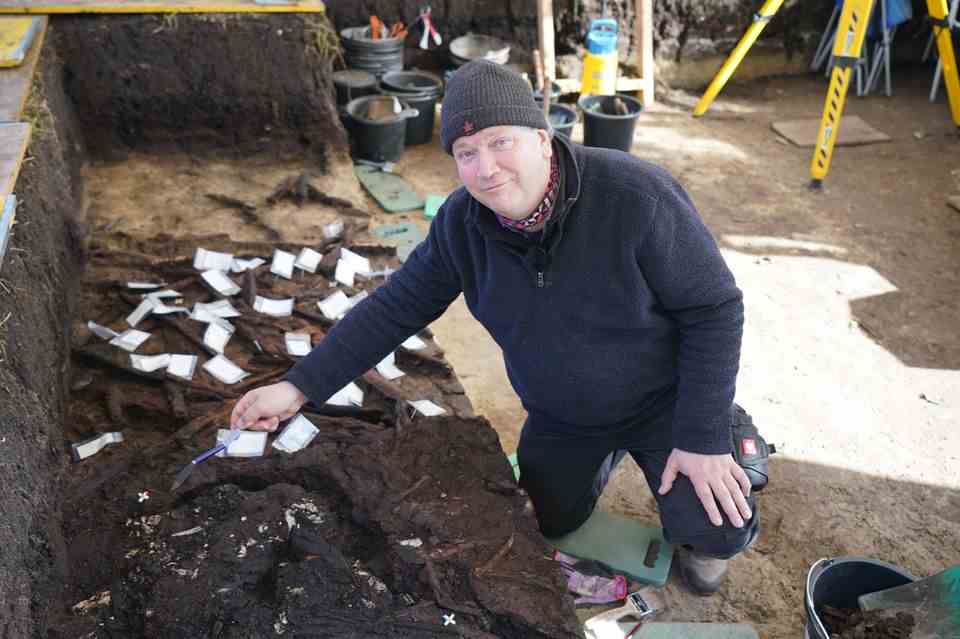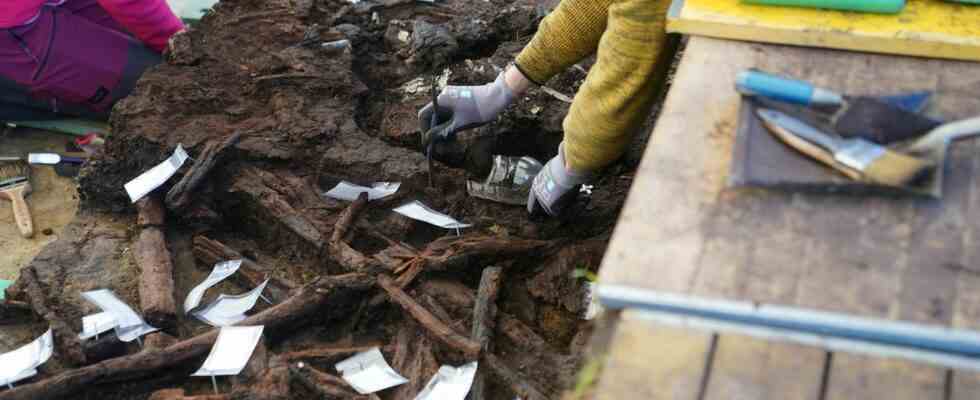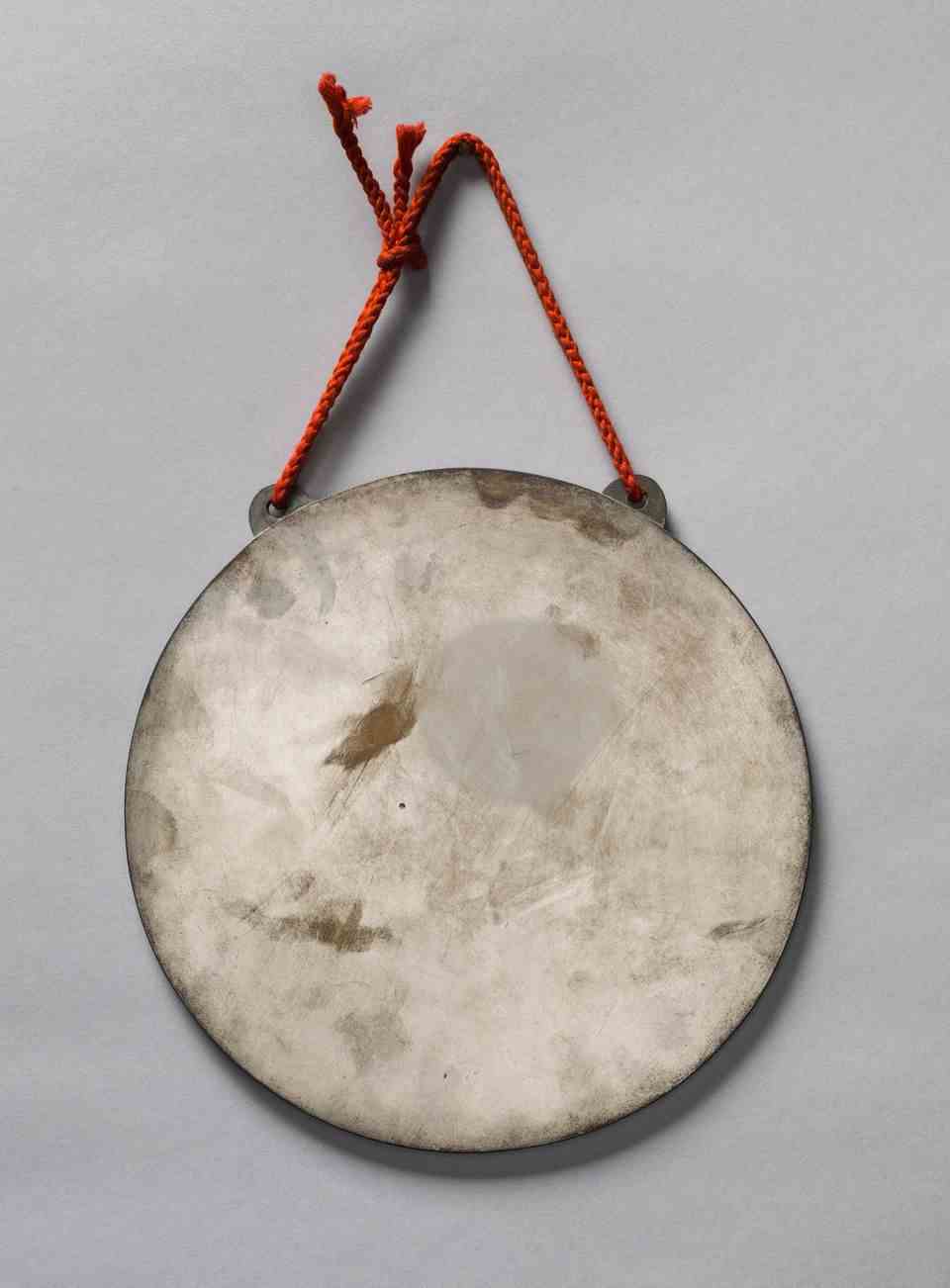Schleswig Holstein
Bones of the oldest North German discovered in the moor – skeletal remains are more than 10,000 years old
Archaeologists with the discovered bones
© Marcus Brandt / DPA
He lived in the Middle Stone Age, caught fish, hunted, collected plants: Remains of the oldest known North German were discovered near Lüchow-Dannenberg.
There is no other find in northern Germany that is this old: “It’s a sensation for me,” said archaeologist Harald Lübke. “We have the oldest known North German!” He was there when the bones of a human being were discovered in Duvensee in Schleswig-Holstein. And they are probably around 10,500 years old.
It is very fortunate that the archaeologists were able to make this find, because the dead person had actually been cremated at the time. Cremation was the most common form of burial in Europe for many thousands of years, but in this case several bones were not completely burned. The bones were found in a bog, which probably helped preserve them over the long term.
The oldest grave in northern Germany
Archaeologist Harald Lübke hopes to be able to extract DNA from particularly well-preserved pieces of bone, from which the origin and characteristics of the deceased could be deciphered. “That would be a real treasure trove,” he is convinced. The bones are now being removed from the bog soil in a complete block of earth so that they can be carefully examined under laboratory conditions.
It has long been known that people lived in the area around the Duvensee Moor during the Middle Stone Age. Archaeologists have found tools and remains of settlements there in the past. The lakes that once existed there were probably an incentive – both as a source of water and for fishing. Nothing was known about the dead of these people.

The archaeologist Harald Lübke in Duvensee
© Marcus Brandt / DPA
Where is the dead man’s head?
What is currently still a mystery: So far, the skull of the dead man has not been found. The archaeologists led by Harald Lübke now want to find out whether it was not preserved for previously unknown reasons, or whether the body was buried without a head. “We’ve only opened a new door here at the moment. But behind it there are only dark rooms at the moment.”
For the researchers, the find is a real stroke of luck: a case from the same period is only known from Denmark – the Mesolithic.



